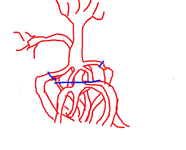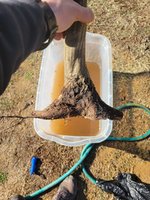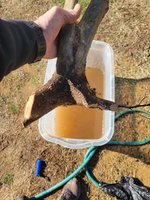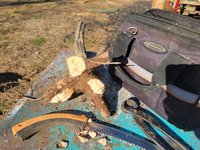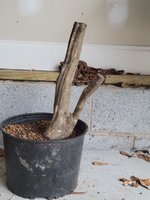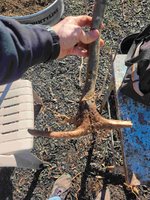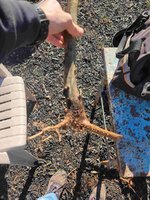Carolina (American) Hornbeam can take drastic root reduction. Collecting them here, I don't dig them up, as much as saw them out of the ground. When I've collected them from the wood, I have routinely sawed off 99 percent of feeder roots, severing all major roots four to six inches out from the trunk.
The containerized version of this would be to retain a few feeders, if possible, but it's probably not necessary if this tree is growing well. I'd saw off at the blue lines, I'd also chop the trunk at the same time to within three inches longer than the planned finished height.
I'd then wash all the old soil off with a hose, then plant securely (wire in) in a bonsai pot with bonsai soil. Put the tree where it's protected from wind (and frost if you get it, insuring you cover the nebari with at least an inch of soil. Also make sure the soil doesn't go dry and WAIT. Could take a couple of weeks before you see buds on the trunk.

